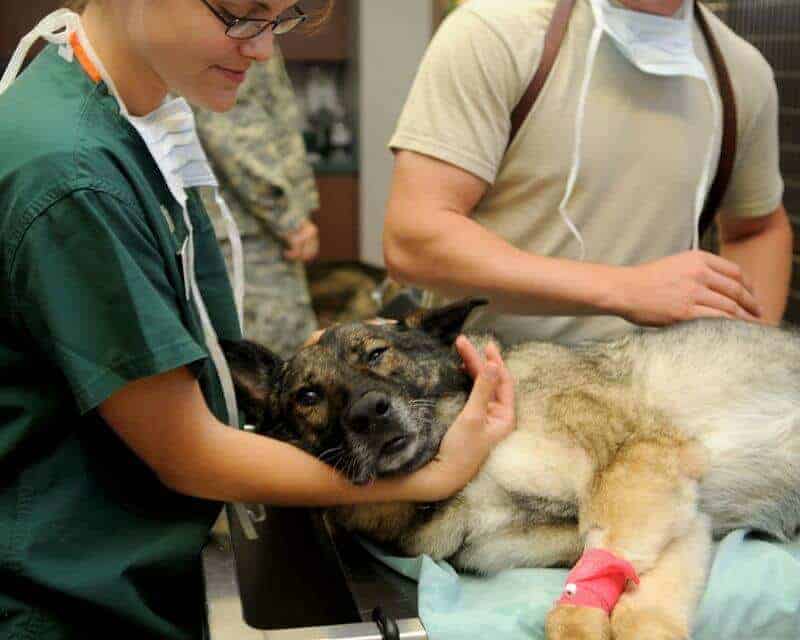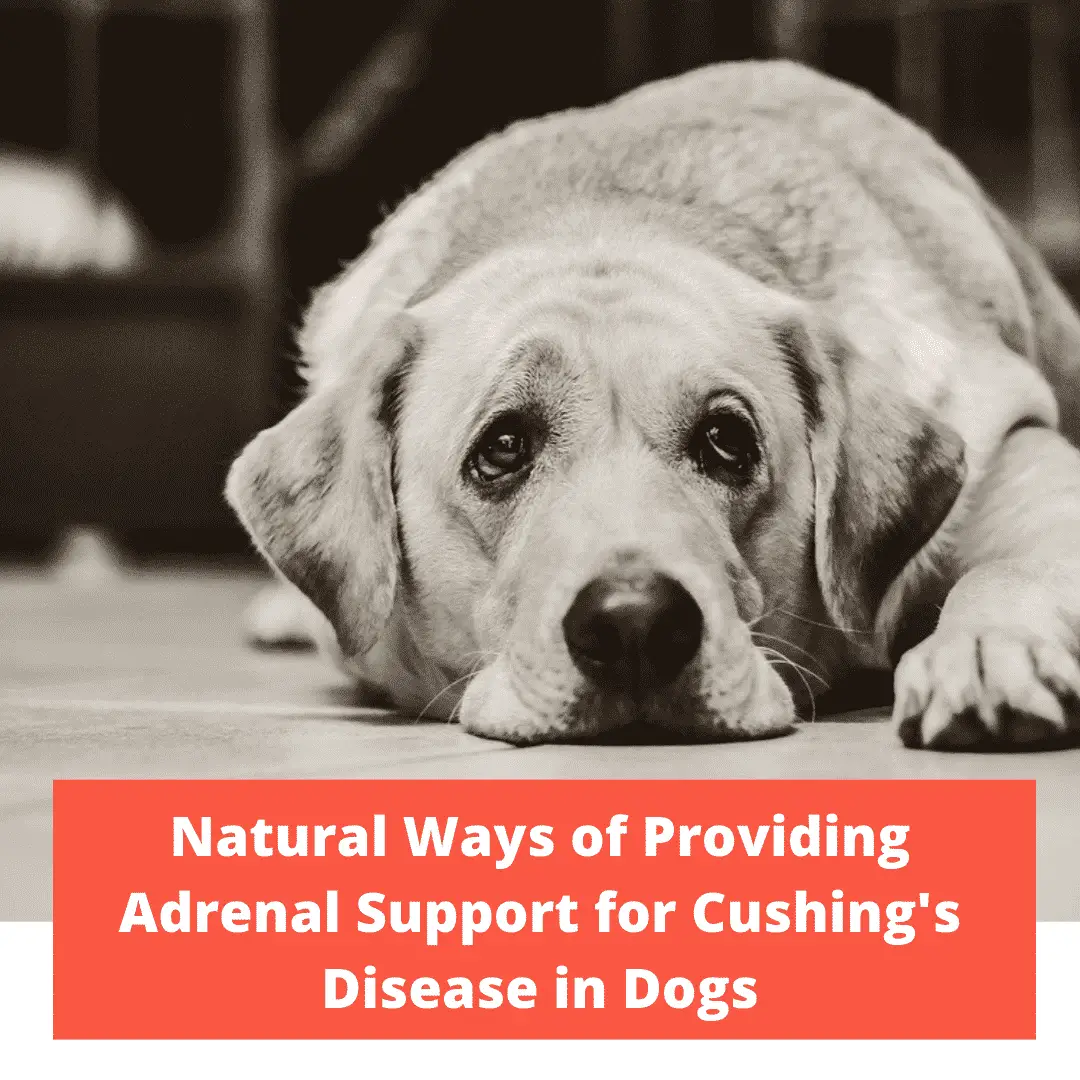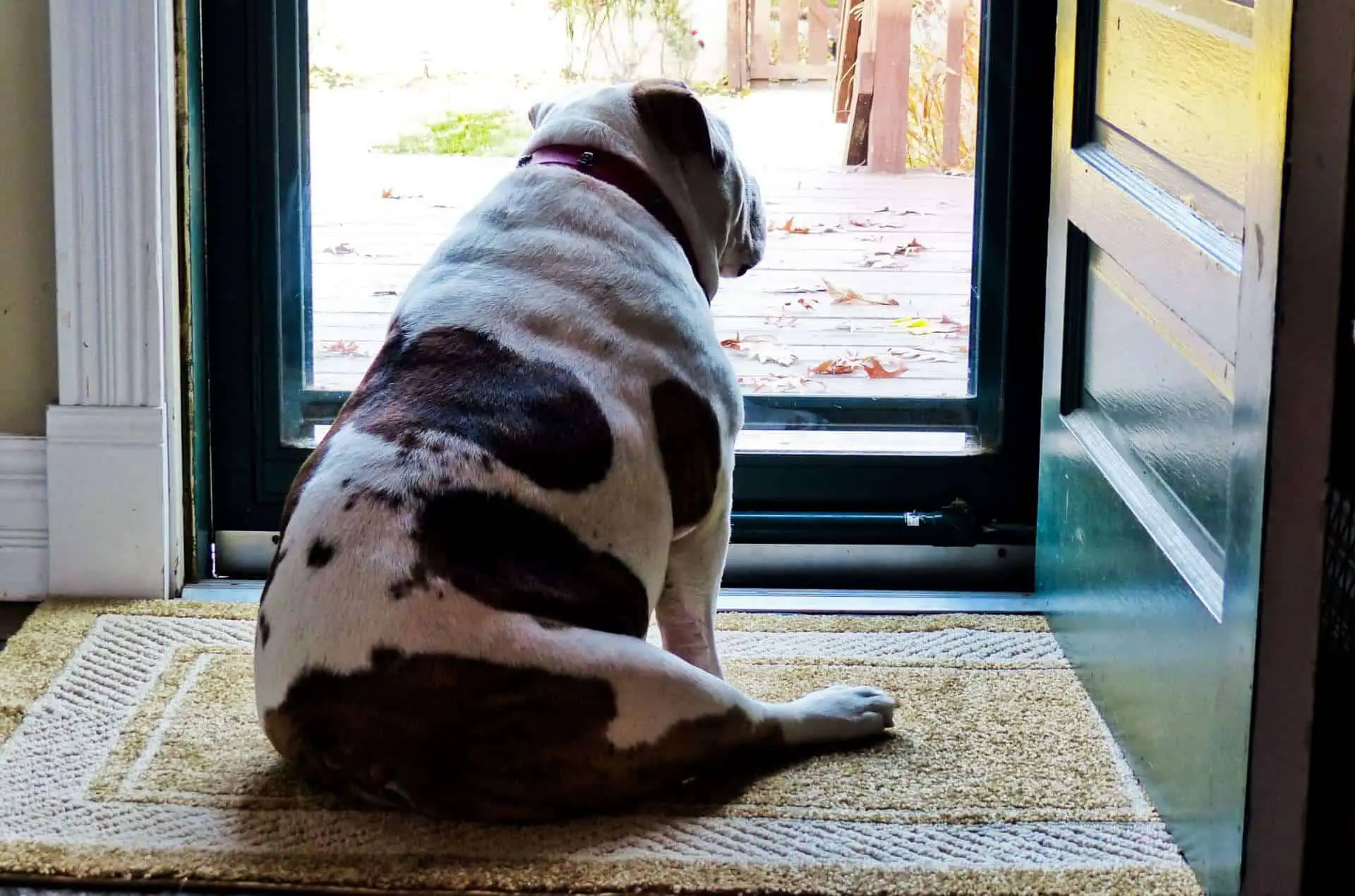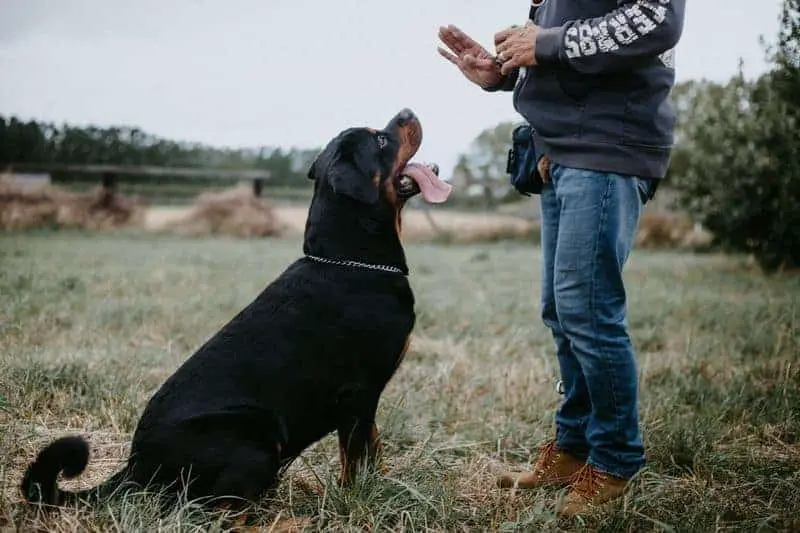Cancer is one of the leading causes of death among humans and like humans, dogs too, face the risk of developing cancer as they age. In fact, it is what kills dogs the most and according to estimates, out of every three domestic dogs, one will develop cancer. The risk of development is the highest after dogs live beyond ten years of age. In this article we look at what dog cancer is, what the signs that your dog may have dog cancer and what you can do about it.
What is Dog Cancer?
Cancer in dogs works the same way that it does in humans. As dogs live and age, billions of the unhealthy and abnormal cells in their bodies die, only to be replenished by new and healthy ones; a cyclical process that keeps on happening throughout their lives.
However, cancer develops when abnormal cells don’t die. Instead of dying like normal cells that grow unhealthy over time, they mutate, and live on and divide as cancer cells, affecting everything in its path and turning more cells to cancer cells.
The existence of a few cancer cells in a dog’s body will not lead to the dog displaying symptoms of cancer. However, when the few become many, dogs will display tell-tale signs of dog cancer.
What are the Common Signs and Symptoms of Dog Cancer?
While signs and symptoms may vary from one dog to the next, there are a few basic symptoms that indicate the possibility of cancer that a dog may have developed.
- Sudden Loss of Weight: If the dog is an active and healthy one, its weight will be at its optimum. However, if there is an unexplained loss of weight that happens over a short period, it may point towards cancer. While owners and caregivers need to ensure a proper diet for dogs, if a dog loses weight even when it is being fed right, there is a high possibility of cancer.
- Changes in Eating Habits: Dogs thrive when their mealtimes are scheduled. However, if a dog displays consistent changes in its eating habits, it is a cause for concern. Occasional dietary changes are normal, particularly when the dog has an upset stomach, and these changes resolve in a matter of days. But if there’s no coming back to normal, some form of cancer may be the underlying reason.
- Unexplained Swellings: Cancer cells tend to grow in a particular region of the body and form a lump. If you notice a lump underneath the fur that does not heal, it may signal a cancerous growth inside the body. Like humans, dogs too can have benign tumors; tumors that are not cancerous. However, if the swelling continues to grow in size, it may be a sign of malignant tumors; tumors that are cancerous.
- Skin Sores that Don’t Heal: Dogs on the streets are particularly prone to skin cancer as they are more exposed to the elements than pets, particularly in areas with polluted environments. The most common skin cancer symptom in dogs is a sore patch of skin that simply doesn’t go back to normal, even after the application of ointments and the consumption of antibiotics. While certain bacterial skin infections may also cause sore patches, they typically resolve after a course of a prescribed antibiotic.
- Loss of Energy and Enthusiasm: Dogs, by nature, are energetic and enthusiastic creatures. While lethargy is common in the moments leading up to sleep, typically, healthy dogs have an incredible amount of energy to burn. However, if a healthy dog suddenly loses all interest in activities and starts living a lethargic life, cancer may be the culprit.
- Breathing Difficulties: Dogs pant, but only after they have been active. If your dog seems unable to catch its breath even when it has been in a restful state, there may be an issue with its lungs. Air pollution from industrial emissions, smoking, and the bursting of firecrackers affect dogs just like they do humans. Dogs living in regions with high air pollution levels stand a great risk of developing lung cancers.
- Defecating and Urinating Difficulties: Tumors that develop in and around the dog’s anus or urinary tract can block defecation and urination, leading to extreme discomfort. As the waste builds up inside a dog’s body, it can complicate not just the tumor itself but also result in other severe medical conditions.
- Difficulties in Swallowing and Eating: If your dog is a voracious eater but displays trouble when swallowing and eating food, it could signal a cancerous tumor in the esophagus. The lump creates a blockage, which can make swallowing extremely painful.
In the early stages of cancer, many dogs may not even display any symptoms, which makes it a difficult disease to diagnose in dogs.

Table of Contents
What are the Types of Cancer that Commonly Affect Dogs and their Treatments?
Dogs may develop numerous cancer complications, but the following are the most common types of cancers among dogs:
Osteosarcoma
A type of bone cancer, osteosarcoma typically affects dogs of large breeds, and its most common symptom is a tumor that occurs in the dogs’ limbs. If osteosarcoma is not diagnosed early, it can spread from the affected bone(s) to other bones, the lymph nodes, and the lungs.
Treatment typically involves amputation of the source limb, following which metastases are slowed by chemotherapy. This combination of surgery and chemotherapy may extend an affected dog’s lifespan by 1 – 2 years. While there is no concrete preventive method, veterinarians recommend an immune system-boosting lifestyle and diet so that the cancer cells can be fought off.
Primary Lung Tumor
This is a type of lung cancer that is common in old dogs and the diagnosis of primary lung tumors is often incidental. It is typically diagnosed based on the results of lung examinations (x-rays) that are taken before dental procedures and during annual health check-ups. For concrete identification of the exact source of the tumor, CT scans are recommended.
While the surgical process of removing the tumor is invasive, dogs typically recover from the surgery without long-term complications. If cancer has spread beyond the tumor to other parts of the lungs and other organs, chemotherapy is recommended for slowing progression.
Hemangiosarcoma
Hemangiosarcoma occurs typically in the heart’s right atrium, the spleen, the liver, or the skin. Life-threatening situations may arise from this form of cancer, particularly if it affects the spleen. In such a scenario, a dog will show no symptoms until the tumor starts bleeding internally after rupturing.
It takes 3 – 4 months for this form of cancer to manifest and treatment involves a combination of chemotherapy and surgery. If the condition affects the skin, radiation therapy can be used.
Thyroid Carcinoma
A cancerous tumor in the thyroid glands is commonly found in dogs that are more than ten years old. Sometimes, these types of tumors may increase blood thyroid hormone levels, as they may secrete the thyroid hormone actively. Hyperthyroidism in dogs may lead to the dogs displaying symptoms such as stomach upset, hyperactivity, and unexplained weight loss.
Treatment of thyroid carcinoma involves surgery for removing the cancerous tumor. In certain cases, it may not be possible to completely remove the tumor. In such circumstances, radiation therapy is the best way to treat the tumors. If cancer has already started to spread to other areas of the body, chemotherapy can be used to delay progression.
Mammary Gland Carcinoma
This type of cancer is most prevalent in older female dogs whose ovaries have not been removed. Mammary gland carcinoma arises due to the influence that hormones have on the mammary tissue. Not all tumors of the mammary gland are cancerous, but evidence suggests that almost half of the dogs that have cancerous tumors would go on to die because of them.
In many circumstances, this form of cancer can be treated through surgery alone, with radiation therapy generally not required. However, if there is a sign of the cancer spreading, chemotherapy can be used for delaying the spread.
Oral Melanoma
Dog breeds that have gums and tongues of darker pigments are prone to developing oral melanoma, which affects the oral cavity’s underlying bone and tissue. If the cancerous tumor grows big, it is generally not possible to remove the entire tumor.
Treatment of oral melanoma involves highly invasive surgery and a combination of chemotherapy, radiation therapy, and immunotherapy. A therapeutic vaccine is also available for treatment.
Mast Cell Tumors
Mast cells are present across the length and breadth of the body, which makes mast cell cancerous tumors a possibility in practically any organ. Typically, such tumors occur in dogs’ skins and if detected in their early stages, these tumors can be treated with surgery alone.
However, if the tumors are severe, a combination of different treatments such as surgery, chemotherapy, and radiation therapy may be required to treat the tumor and to prevent it from spreading to other organs. Veterinarians may also prescribe antihistamines to provide relief from the unpleasant symptoms of this form of cancer, such as diarrhea, vomiting, and appetite loss. Mast cell tumors are very difficult to treat if they occur in the digestive and urinary tracts.
Lymphoma
Lymphoma is a type of blood cancer that involves the cancerous mutation of lymphocytes, a particular type of white blood cells. A common symptom of lymphoma is enlarged external lymph nodes. Lymphoma may manifest as gastrointestinal lymphoma, cutaneous lymphoma, or nervous system lymphoma.
This type of cancer is treatable and successful treatment can extend a dog’s life by 1 – 2 years. Treatment involves chemotherapy sessions every week and there are very few side effects of the treatment.
Are all Dog Breeds at Risk of Developing Cancer?
While there is a risk of cancer in all dogs, the following dog breeds are more prone to develop the disease:
- Flat-Coated Retrievers: Flat-coated retrievers have a high risk of developing histiocytic sarcomas that may affect the lungs, the skin, bone marrow, lymph nodes, spleen, and the brain.
- Golden Retrievers: Hemangiosarcoma is a type of cancer that is common among golden retrievers, with male golden retrievers at more risk than the females.
- Scottish Terriers: Scottish terriers commonly develop bladder cancer as they get old, particularly the ones that are exposed to herbicides.
- Beagles: Beagles are also at risk of developing bladder cancer. Common symptoms include difficulties in urinating and blood in the urine.
- Boxers: Boxers and other brachycephalic dogs have a greater risk of brain cancers, particularly when they cross the 9-year mark.
How to Manage Cancer Pain in Dogs?
Cancer causes pain in human beings and it’s the same for dogs. While there may be little or no pain during the early stages, if the disease progresses, dogs may have to endure a lot of pain. To manage pain, veterinarians may recommend some medications such as:
- Non-Steroidal Anti-Inflammatory Drugs (NSAIDs): Inflammation and pain caused by cancer can be managed by NSAIDs such as Deramaxx, Metacam, Previcox, and Rimadyl. However, NSAIDs may trigger side effects and may also impact kidney and liver function. Typically, veterinarians assess liver and kidney health before prescribing NSAIDs. Do not be tempted to try giving your dog ibuprofen, which can be lethal to them.
- Neurotransmitter Modifiers: Neurotransmitter modifiers such as amantadine and gabapentin modify the neurotransmitters that signal pain. While these medications will not have any direct effect on the inflammation, they may ease painful symptoms. These are typically prescribed in combination with other medicines.
- Tramadol: The narcotic tramadol works primarily as an anti-depressant and it may be useful for dogs who are depressed due to cancer. However, the dosage should be strictly monitored, as too much of the drug may lead to extreme sedation.
Some other methods that may work to manage pain include acupuncture, topical medications, and fentanyl patches.
When to Consider Euthanasia?
Pet owners and caregivers are often faced with a severe dilemma when cancer treatments are ineffective and extremely painful for the dogs. It is important to keep in mind that a dog’s quality of life should be a priority while seeking cancer treatment or management. If cancer treatments offer little benefit and the dog continues to suffer from severe pain, it may be best to put an end to its life as an act of mercy through euthanasia.
When it comes to the diagnosis, management, and treatment of cancer in dogs, it’s up to the owners and caregivers to act responsibly and take decisions that are in the best long-term interests of the affected dogs.







